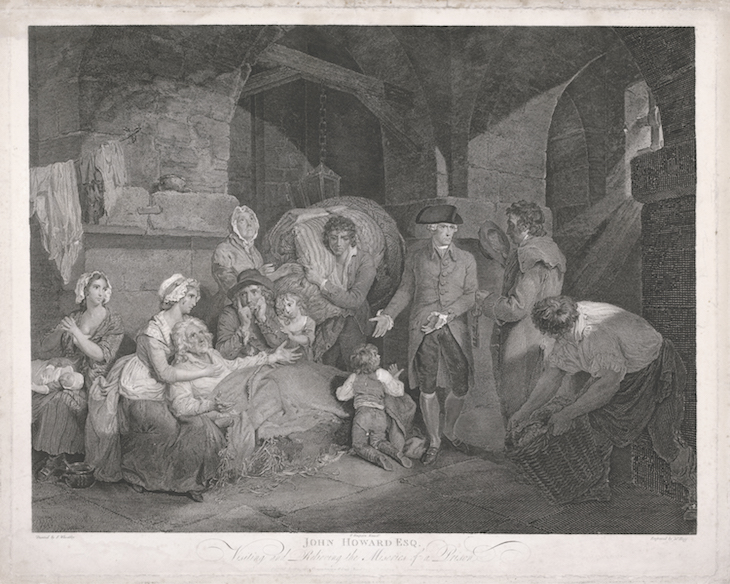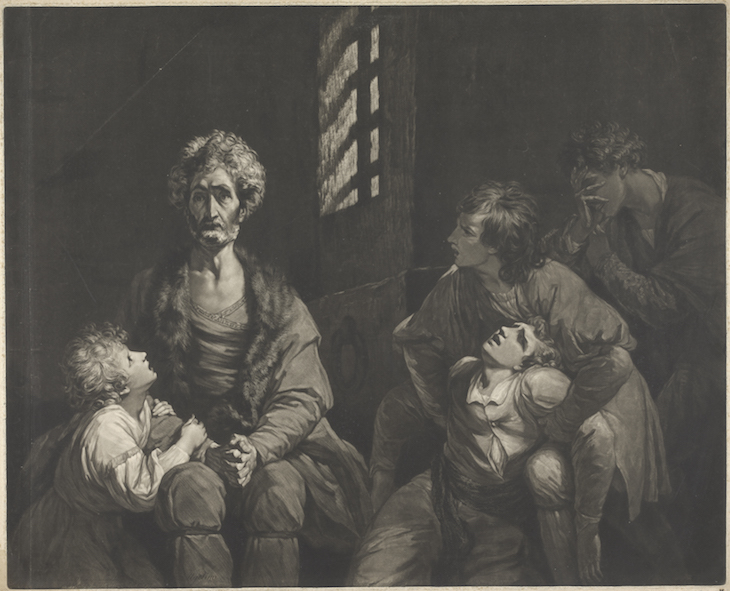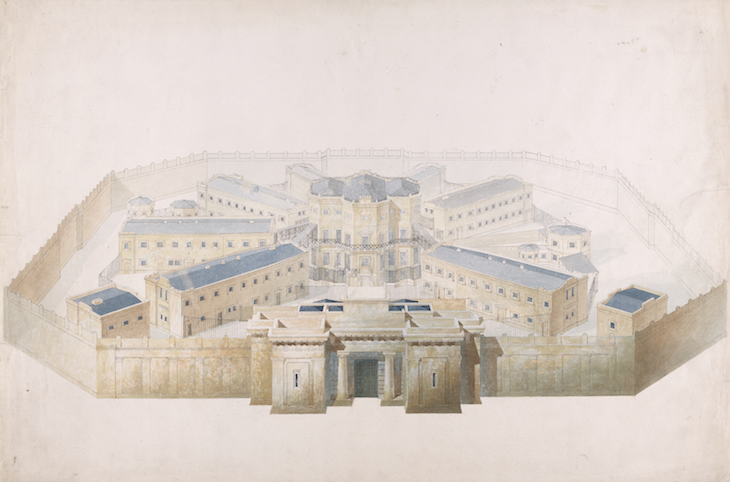British prisons came under intense scrutiny in the late 18th century; penal reformer John Howard published his survey of the State of the Prisons in England and Wales in 1777, making public the abysmal conditions in which convicts were kept. Howard’s demands for reform resonated with the visual depiction of prisons by artists such of Joshua Reynolds and Joseph Wright of Derby and motivated architectural designs of those who sought to construct a new, progressive model of prison – most famously the plan of Sir Jeffry Wyatville, which took its cues from the panopticon of Jeremy Bentham. The exhibition also includes material evidence of life in prisons, from cell keys to mug shots. Find out more about ‘Captive Bodies’ from the YCBA’s website.
Preview the exhibition below | See Apollo’s Picks of the Week here

The Prisoner (1787–90), Joseph Wright of Derby. Courtesy Yale Center for British Art

Visiting and Relieving the Miseries of a Prison (1790), John Howard. Courtesy Yale Center for British Art

Count Ugolino della Gherardesca and his Sons in Prison (1774), John Dixon, after Joshua Reynolds. Courtesy Yale Center for British Art

The Captive (1786), engraved by Thomas Ryder, after Joseph Wright of Derby.

A Design for a Prison (c. 1830s), studio of Jeffry Wyatville. Courtesy Yale Center for British Art











![Masterpiece [Re]discovery 2022. Photo: Ben Fisher Photography, courtesy of Masterpiece London](http://www.apollo-magazine.com/wp-content/uploads/2022/07/MPL2022_4263.jpg)
Why are fathers so absent from art history?